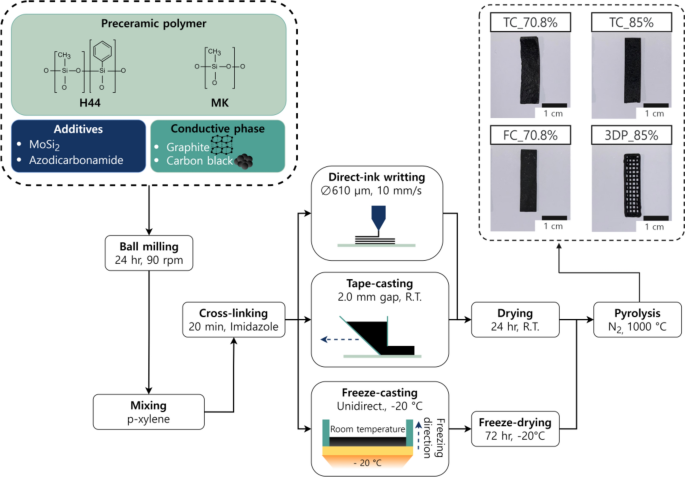Influence of the 3D architecture and surface roughness of SiOC anodes on bioelectrochemical system performance: a comparative study of freeze-cast, 3D-printed, and tape-cast materials with uniform composition
Abstract
3D-printed anodes for bioelectrochemical systems are increasingly being reported. However, comparisons between 3D-printed anodes and their non-3D-printed counterparts with the same material composition are still lacking. In addition, surface roughness parameters that could be correlated with bioelectrochemical performance are rarely determined. To fill these gaps, slurries with identical composition but different mass fractions were processed into SiOC anodes by tape-casting, freeze-casting, or direct-ink writing. The current generation was investigated using electroactive biofilms enriched with Geobacter spp. Freeze-cast anodes showed more surface pores and the highest surface kurtosis of 5.7 ± 0.5, whereas tape-cast and 3D-printed anodes showed a closed surface porosity. 3D-printing was only possible using slurries 85 wt% of mass fraction. The surface pores of the freeze-cast anodes improved bacterial adhesion and resulted in a high initial (first cycle) maximum current density per geometric surface area of 9.2 ± 2.1 A m−2. The larger surface area of the 3D-printed anodes prevented pore clogging and produced the highest current density per geometric surface area of 12.0 ± 1.2 A m−2. The current density values of all anodes are similar when the current density is normalized over the entire geometric surface as determined by CT-scans. This study highlights the role of geometric surface area in normalizing current generation and the need to use more surface roughness parameters to correlate anode properties, bacterial adhesion, and current generation.


 求助内容:
求助内容: 应助结果提醒方式:
应助结果提醒方式:


